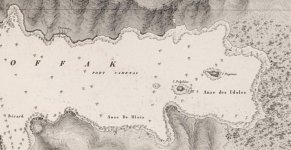Taphrospilus
Well-known member
From Colibri delphinae (Lesson, 1839) we can fin OD here. In Mulsant & Verreux I found here:
Till know I failed to find a "Illustrations de zoologie, ou, Recueil de figures d'animaux peintes d'après nature Vol. II" and Vol I stopped at plate 60.
I ask as I am not 100% convinved on the entry:
Of couse the name could derive from there but the OD gives no hint on the etymology. Delphine seems to be a common name in France e.g. here or here:
P.S. I see no relationship to her even if Lesson is mentioned on the same page.
P.P.S. And in the same publication he honored his child in Mino anais.
Lesson, Illust. Zool., t. II, (1832), pl. 64
Till know I failed to find a "Illustrations de zoologie, ou, Recueil de figures d'animaux peintes d'après nature Vol. II" and Vol I stopped at plate 60.
I ask as I am not 100% convinved on the entry:
delphinae
Gr. myth. Delphinios, an epithet of the sun god Apollo (cf. L. Delphinus a starry constellation); the “Oiseau-mouche Delphine” of Lesson 1839 (Colibri).
Of couse the name could derive from there but the OD gives no hint on the etymology. Delphine seems to be a common name in France e.g. here or here:
Delphine Gay ( aujourd'hui madame Emile de Girardin)
P.S. I see no relationship to her even if Lesson is mentioned on the same page.
P.P.S. And in the same publication he honored his child in Mino anais.
Last edited:





